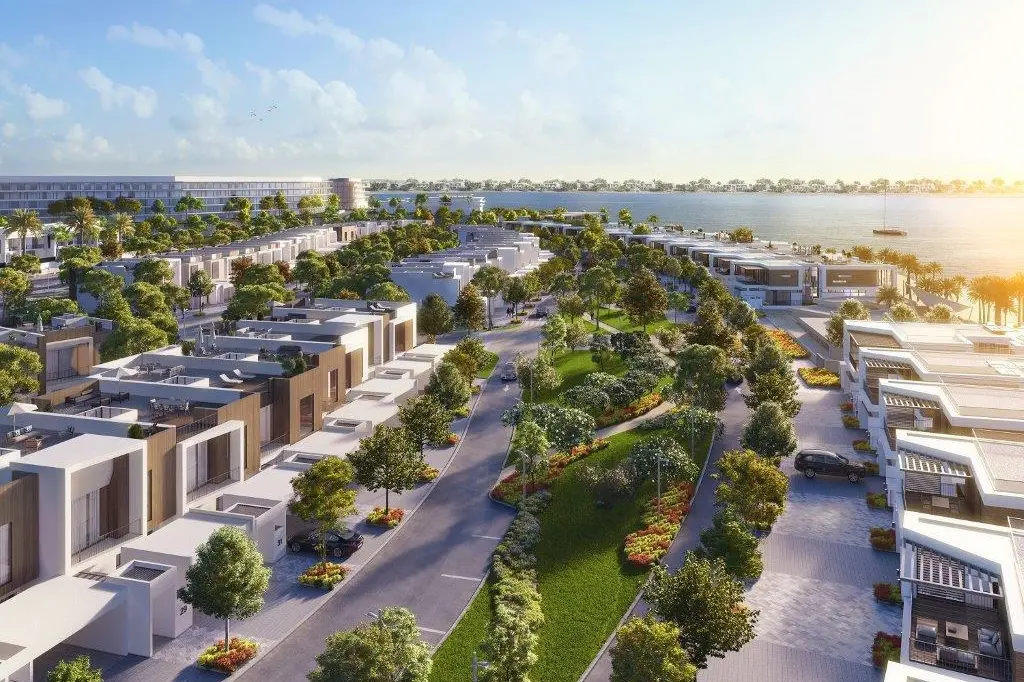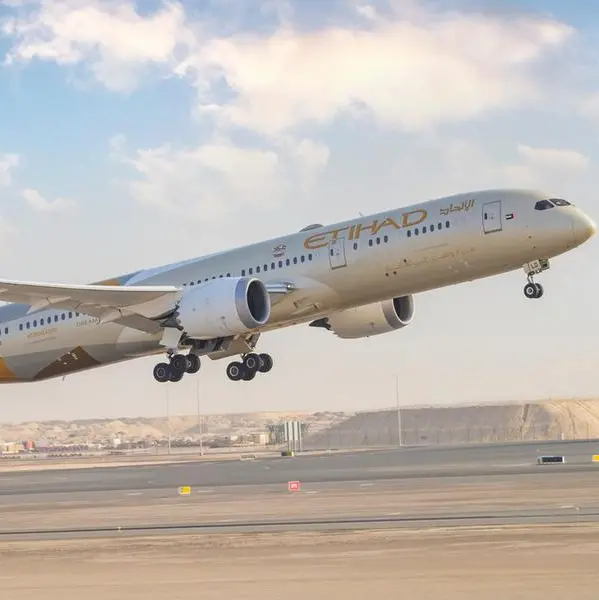PHOTO
At first glance, Samuel Sidiqi's move in May this year from one Gulf property developer, Kuwait's National Real Estate Company (NREC), to another, Ras Al Khaimah Properties, might not have seemed like a huge leap up the corporate ladder.
After all, at National Real Estate Company, Sidiqi was heading a business with operations spread across the region, covering 10 countries, and was ultimately responsible for developing the high-profile Reem Mall shopping centre in Abu Dhabi.
By comparison, almost all of RAK Properties' portfolio is in its home emirate, and a large chunk of its current pipeline is in one section of this - the 10 billion United Arab Emirates dirhams ($2.7 billion), 43 million square feet Mina Al Arab waterfront community.
Yet, as Sidiqi explained when asked by Zawya earlier this month why he made the move, the development offers a nice quality of life.
“You know, it's really about lifestyle," Sidiqi said during an interview which took place in Dubai earlier this month to announce the launch of two new projects at Hayat Island, which is one of the islands that form Mina Al Arab.
"When I visited Mina Al Arab, I said 'This is a great place to raise my daughter'.
"My daughter is two and a half now. I take her out on the paddleboard, and that's something where, after looking after 10 different countries and flying around the world all of the time, I didn't spend enough time with her."
Sidiqi is, somewhat understandably, keen to stress the tranquil nature of the company's master planned beachfront schemes such as Mina Al Arab as a key selling point, talking about its "amazing beachfront close to nature".
Yet, although planning waterfront communities in picturesque surroundings featuring mangroves and flamingoes may be preferable to flying between 10 MENA countries checking on investments in Egypt, Lebanon, Iraq, Jordan and Libya, it is hardly a cakewalk, either.
With neighbouring Dubai’s real estate market now in its fourth year of a downturn, both sale and rental prices in Ras Al Khaimah are following suit.
According to consultancy Asteco's Q3 2018 UAE market report published last week, typical apartment rents in the emirate have fallen by around 11 percent year-on-year, although the number of transactions in the first half of the year increased by a third to 2,632. Sale prices have also declined by three to five percent over the past year, according to Dubai-based consultancy Land Sterling.
The impact of this can be seen in RAK Properties' recent financial performance. Its full-year accounts for 2017 show that the company's sales declined by 20 percent to 312.9 million dirhams, although profits held up, climbing by 10 percent to 191.9 million dirhams. For the first half of 2018, however, revenue dropped by 64 percent year-on-year to 75.4 million dirhams, while net profit fell by 53 percent to 29 million dirhams.
Sidiqi explained that developers often have to contend with swings in revenue and profit numbers in certain quarters due to the timing of unit handovers and payments.
"We do villa projects and apartment projects, so you will sometimes get some chunky revenue. You will see some ups and downs in certain quarters," he said.
RAK Properties has embarked on a plan to address, this, though, with a new corporate plan focused on retaining more of the properties it develops to provide recurring revenues.


Samuel Dean Sidiqi RAKP CEO
To have and to hold
"Strategically, we're shifting towards building more recurring revenue assets. So we've invested in two new hotels - an Anantara hotel and an Intercontinental hotel. As they get developed, you'll have this nice, sustainable revenue," Sidiqi said. "I think that's important - to build that strong basis as a listed real estate developer.”
The Anantara Hotel is a 343-key property that was originally scheduled to open this year, while a deal for the 350-key Intercontinental Hotel was originally signed by RAK Properties back in 2008, with an initial opening date scheduled for 2010.
Sidiqi said that both hotels are now planned to open next year.
"We will probably open the Intercontinental first and then the Anantara some period later," he said.
The opening of both properties would help to boost Mina Al Arab’s profile, Sidiqi said, arguing that the Anantara Hotel, containing villas in mangroves with water on three sides, is "going to be an amazing destination for the UAE overall".
"I think when you look at the hotels today in Ras Al Khaimah, you have a lot of Hiltons, you have the Ritz Carltons, but one of the things that Anantara is going to bring to the table is that it's an Asian hotel. It's going to market to a different set of people."
Moreover, he said the Intercontinental could also tap into a demand from the same group's global customer base, adding that the brand was "very, very popular in the GCC".
Ras Al Khaimah's tourism sector is faring somewhat better than its residential market, with the emirate's tourism development authority (RAK TDA) reporting a 14 percent increase in the number of international visitors during the first six months of 2018.
Data from consultancy firm STR also showed that in the year to the end of July, occupancy levels for hotel rooms in the emirate remained stable at 70 percent, and average daily room rates fell by just 1 percent to 580 dirhams per night.
Jelena Crnogorcic, an associate director in CBRE Middle East's strategic advisory arm, told Zawya via email that increased tourism numbers had been "primarily driven by the growth in visitors from European countries".
She said that there are currently around 6,400 keys available in Ras Al Khaimah's hospitality market, of which 5,500 are in hotels and 900 are serviced apartments. This is set to increase by 37.5 percent by the end of 2021, as 2,400 new keys are due to be added through the completion of the Intercontinental and Anantara hotels, plus new Marriott and Sheraton properties.
RAK Properties’ accounts show that it has 67.1 million sq ft of land granted to it by the Ras Al Khaimah government, which retains a small (below 5 percent) stake in the company. This includes the 43 million sq ft Mina Al Arab, an adjacent 19 million sq ft eco reserve, the land on which Julphar Towers - the emirate's first high-rise towers completed in 2011 - sits, plus some other plots.
At June 30, the company’s net assets stood at 3.8 billion dirham ($1.03 billion). Although its return on equity is lower than many of its listed peers - 0.8 percent in the first six months of the year, compared to 7.5 percent for Emaar Properties and around 6 percent for Damac Properties - Sidiqi said the smaller marketplace in which it operates means that it has to be careful in how quickly it develops.
"So we didn't want to overdevelop it and kill its value,” Sidiqi said. “We want to focus on creating good returns for investors, by optimising the value, from both a speed and an overall value perspective."
Asteco’s Q3 property report said that following a number of recent launches in the northern emirates, “concerns in regards to a marked future oversupply situation are starting to emerge, particularly as increasing supply and declining rates in Dubai generally encourage tenant movement”.
And Ras Al Khaimah’s residential market already has fairly high vacancy rates, according to Land Sterling’s managing partner, Hamza Betraoui. In an emailed response to questions from Zawya, he estimated that vacancy rates are "higher than other emirates, at around 30-35 percent of total stock”.
Sidiqi said that although there is downwards pricing pressure in the market, well-built communities such as Mina Al Arab will always remain attractive.
"In a down economy, focusing on quality is really, really important. You see that people move to places they want to be in... You don't leave if you like your neighbours, you like your neighbourhood and everything works.”
In terms of the company's other projects, he said that its Julphar Residences tower containing 266 apartments on Reem Island in Abu Dhabi should now complete by the middle of next year, with many of the homes likely to be retained for rental income.
“The market for leasing in Abu Dhabi seems to be a little bit stronger right now,” he said.
Gateway Residences at Mina Al Arab “should handover next year as well” Sidiqi said, stating that construction has reached the sixth of eight floors on the building, which will contain 144 apartments.
Finally, he said that the four-tower Bay Residences scheme planned for Hayat Island “will benefit enormously from Angel Bay”, which is the new public realm element of the 3 billion dirham Hayat Island announced earlier this month.
“Thus far, we've only been marketing Northbay, but there's going to be more announcements about Bay Residences hopefully later in the year.”
He said that apartments also offered another choice for a community at Mina Al Arab which already has a mix of residents.
“I happen to be on the beach, but even if I were in a three-bedroom apartment, it wouldn't be very expensive. A middle-class family can afford to live in a townhouse,” he argued.
“It's a wonderful community and then from a nature perspective, we have this amazing mangrove that is our honour to protect. As a resident, I can go for a walk and see flamingoes as part of my daily routine,” Sidiqi said.
He also said that he had been reassured by the quality of the development.
“When I think about the growth of the company, what's the value of a real estate firm? The value of that firm is 'Do you believe this company will deliver this quality of product?'.
“It's very helpful to me, the fact that this is a great place to live… that's a great base upon which to build the company. “
(Reporting by Michael Fahy; Editing by Shane McGinley)
(michael.fahy@thomsonreuters.com)
Our Standards: The Thomson Reuters Trust Principles
Disclaimer: This article is provided for informational purposes only. The content does not provide tax, legal or investment advice or opinion regarding the suitability, value or profitability of any particular security, portfolio or investment strategy. Read our full disclaimer policy here.
© ZAWYA 2018











